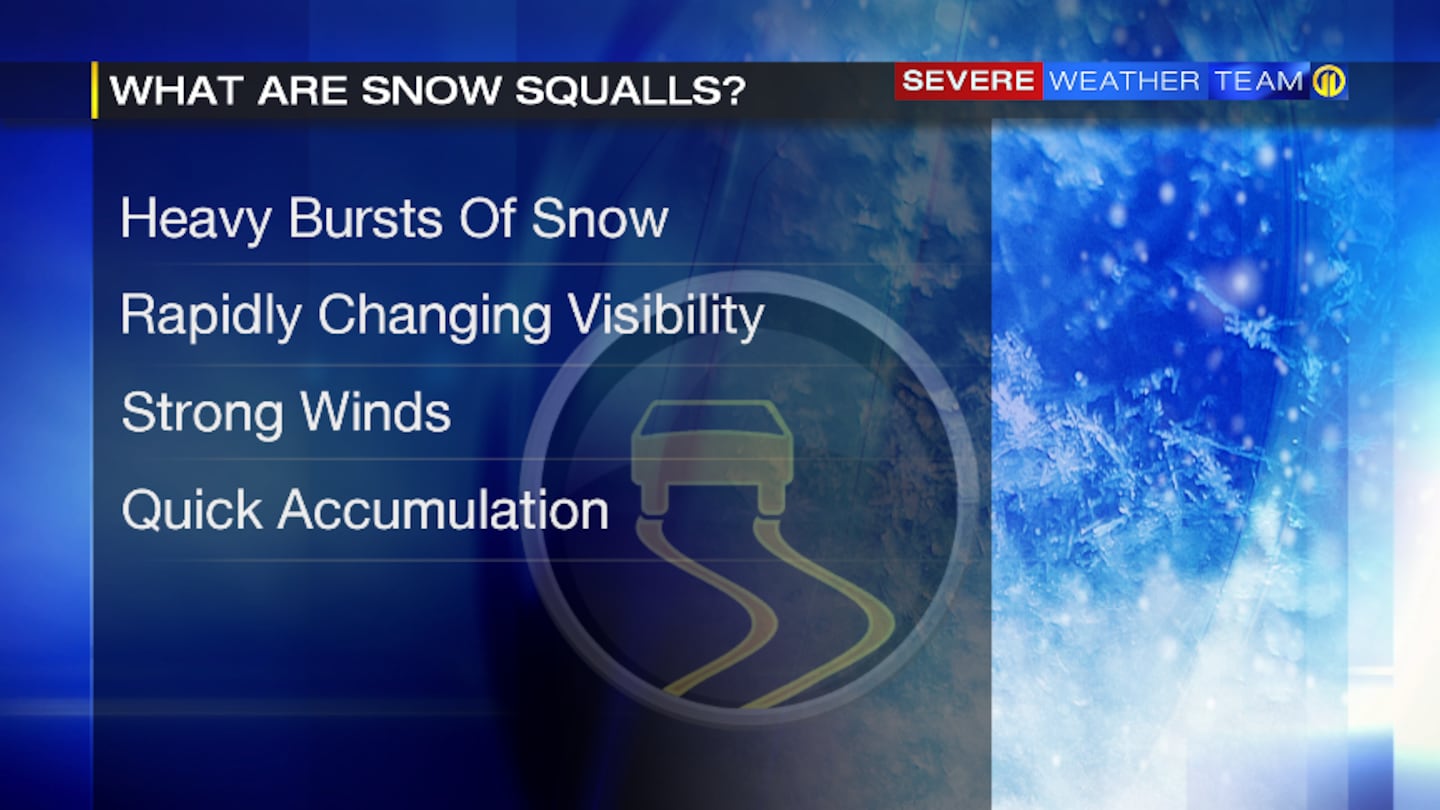PITTSBURGH — During the winter season you may hear a variety of different snow words including flurries, lake-effect snow showers and snow squalls.
Flurries are typically a snow that is light and intermittent or of short duration. Flurries result in little to no snow accumulation. Snow showers are areas of snow which can be light, moderate or heavy in nature. If heavy, they can lead to reduced visibility and a quick coating of snow or more on untreated surfaces.
Lake-effect snow showers are lake induced. Lake Erie is the lake that impacts our weather in the winter. If it’s unfrozen and warm, it’s easier for lake-effect snow to occur in our area. This winter, it’s been running very warm. As of Jan. 19, water temperatures are in the upper 30s and near 40 degrees. As cold air blows over the warmer lake water it causes it, and the moisture to rise, helping form clouds. Those clouds grow tall and snow showers form down wind of the lake. Wind direction plays a role in when we’ll see lake-effect snow showers. Typically, a wind from the west or northwest will bring them to our area. Snow rates within the heaviest of snow showers can be one to sometimes three inches per hour.
Snow squalls are convective in nature. This means that there’s enough instability in the atmosphere to produce bands of heavy snow that feature gusty winds, near-whiteout or whiteout conditions and quick accumulations. Snow squalls have been known to have lightning in them but not always. Snow squalls are unique in that the sun can be shining in one location and a few miles down the road there can be heavy snow and limited visibility.
The National Weather Service started issuing warnings for snow squalls for the first time in November 2018. Warnings are issued when snow is heavy and accompanied by gusty winds and low visibility. They’re generally used for life-threatening conditions and often times when there’s high volume of traffic, such as morning or evening rush hours.








